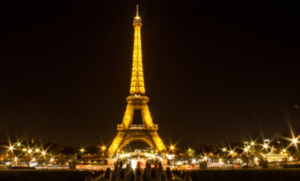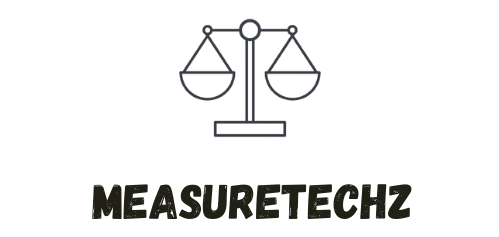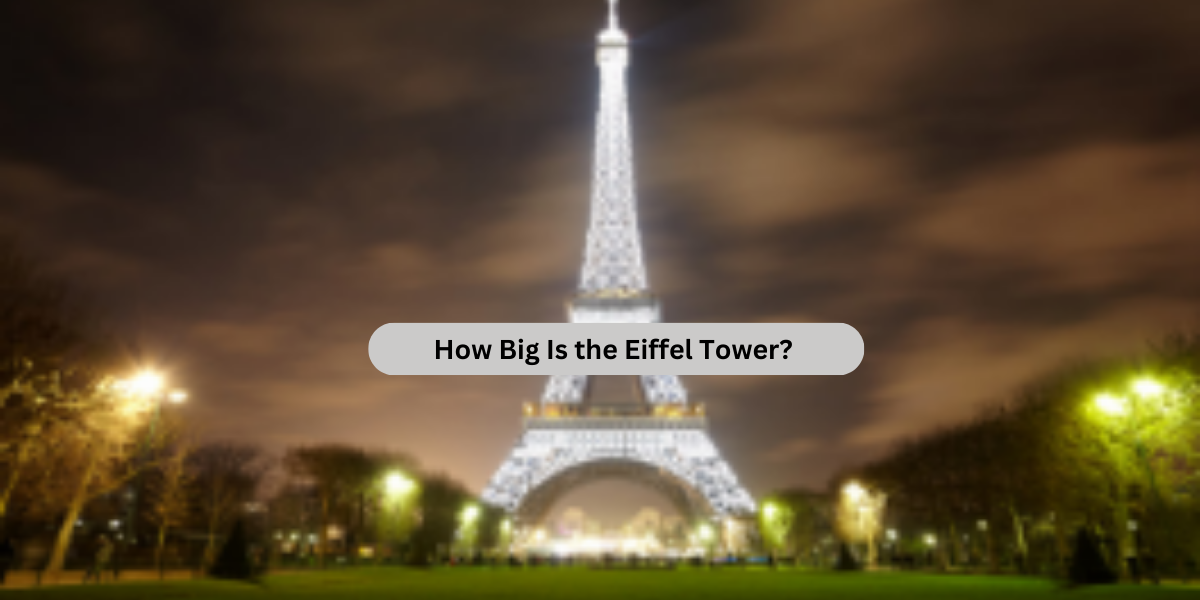The Eiffel Tower is one of the most iconic landmarks in the world, symbolizing the grandeur of Paris and the ingenuity of engineering. Whether you’re planning a visit or just curious, understanding the true scale of this architectural marvel can deepen your appreciation for it. In this article, we’ll dive into the dimensions, history, and significance of the Eiffel Tower to answer the question: How big is the Eiffel Tower?
Dimensions of the Eiffel Tower
The Eiffel Tower’s size is one of its most impressive features. Here’s a breakdown of its key dimensions:
Height
- The Eiffel Tower stands at a height of 330 meters (1,083 feet), including its antenna.
- Originally, when it was completed in 1889, the tower measured 312 meters (1,024 feet) without the antenna.
- It held the title of the tallest man-made structure in the world until 1930, when the Chrysler Building in New York surpassed it.
Base Dimensions
- The tower’s square base measures 125 meters (410 feet) on each side.
- Each of the four legs is firmly anchored with massive foundations that distribute its weight evenly.
Weight
- The total weight of the Eiffel Tower is approximately 10,100 tons.
- This includes the wrought iron structure, the elevators, and other features.
How the Eiffel Tower Compares to Other Structures
To truly grasp the size of the Eiffel Tower, it’s helpful to compare it to other famous landmarks:
- Statue of Liberty: At 93 meters (305 feet) tall, including its base, the Statue of Liberty is less than one-third the height of the Eiffel Tower.
- Empire State Building: Measuring 443 meters (1,454 feet) to its tip, the Empire State Building is taller but serves a different purpose as an office building.
- Burj Khalifa: The world’s tallest building, the Burj Khalifa, stands at an astonishing 828 meters (2,717 feet), dwarfing the Eiffel Tower.
What Makes the Eiffel Tower’s Size Remarkable?
The Eiffel Tower’s size was groundbreaking for its time. Designed by Gustave Eiffel and his team for the 1889 World’s Fair, it was a bold statement of France’s industrial prowess. Here are some key points that highlight its significance:
- Innovative Design: Its height was made possible by the use of wrought iron, which is both lightweight and strong.
- Wind Resistance: The open lattice design allows wind to pass through, minimizing resistance and making it structurally sound.
- Cultural Impact: At the time of its construction, critics dismissed it as an eyesore. Today, it’s a global icon.
FAQs About the Eiffel Tower’s Size
1. Why does the Eiffel Tower’s height change?

The tower expands and contracts with temperature changes. In summer, it can grow by up to 15 cm (6 inches) due to thermal expansion.
2. How many floors does the Eiffel Tower have?
- The Eiffel Tower has three public levels:
- First floor: 57 meters (187 feet) high.
- Second floor: 115 meters (377 feet) high.
- Third floor: 276 meters (906 feet) high, accessible by elevator only.
3. How long does it take to climb the Eiffel Tower?
Visitors can climb to the second floor via 674 steps, which takes about 30-45 minutes depending on your pace.
Fun Facts About the Eiffel Tower
- Lighting: The Eiffel Tower is illuminated by 20,000 light bulbs every evening, creating a spectacular sight.
- Repainting: It’s repainted every 7 years to prevent rust, requiring 60 tons of paint.
- Visitor Numbers: Over 7 million people visit the Eiffel Tower annually, making it one of the most-visited paid monuments in the world.
Conclusion
The Eiffel Tower is more than just a structure; it’s a testament to human creativity and engineering. Standing at 330 meters tall, it continues to awe millions of visitors each year with its sheer size and elegance. Whether you’re seeing it in person or marveling at its beauty from afar, the Eiffel Tower’s dimensions are a reminder of what’s possible when ambition meets innovation.
Plan your trip to Paris and witness the grandeur of the Eiffel Tower for yourself. It’s an experience you won’t forget!

